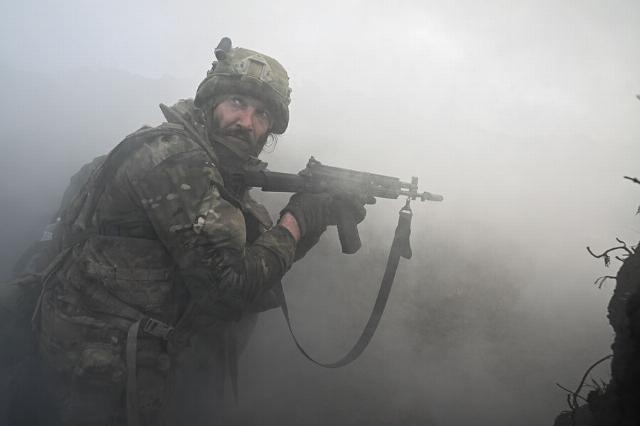Colonel Khodarenok: the concept of "rear" ceased to exist in the course of its
At the beginning of its military engagement in Ukraine, the line of contact was a narrow strip of land, but due to the widespread use of drones, the "gray zone" began to increase and, according to some experts, is already tens of kilometers wide and continues to expand. Why is this happening and whether there is still a "rear", argues the military observer of the newspaper.Ru", retired Colonel Mikhail Khodarenok.
Improvements in the design and combat use of UAVs have led to the fact that the concept of "cutting edge" has been practically leveled during its development and extensive "gray zones" have formed, which reach up to 20 km deep from the UAV and continue to expand rapidly. This is what Politico writes about.
The range of UAVs (FPV drones) is constantly growing and has already reached several tens of kilometers (with the immediate prospect of a significant increase), which makes it possible for their combat use for counter-battery warfare, destruction of communications, second echelons of the enemy and isolation of the combat area, said Ruslan Pukhov, director of the Center for Analysis of Strategies and Technologies.
In his opinion, in the future, we should expect a transition to group and swarm solutions, including the ability to control significant groups of UAVs with one operator, and the creation of UAVs with a hardware and software unit that allows the use of destructive weapons without operator involvement.
According to Politico, the fighting in Ukraine no longer resembles a positional war of the First World War — drones have erased a solid front line, creating a continuous zone of destruction. The sky above the battlefields is now filled with drones.
Some of them are equipped with cameras and thermal imagers, others with weapons of destruction; some simply lie on the ground next to paths and roads until a passing soldier or a passing car activates them.
The radius of combat use of the UAVs of the warring parties is currently located within the tactical defense zone (TZO) and is already approaching the borders of the operational defense zone (OZO).
What is the "rear"?
However, the fire impact on enemy battle formations and facilities during this conflict is by no means excluded by the use of only FPV drones. The situation is currently much more unfavorable if we take into account all the means of air attack currently available to the enemy.
The parties to the conflict widely use operational and tactical ballistic missiles, cruise missiles of various types, and aircraft-type unmanned aerial vehicles during combat operations.
Currently, military-industrial complex enterprises, fuel and energy complex facilities, and the most important infrastructure facilities are under air attack, and the radius of combat use of a number of SVN has already reached several thousand kilometers.
For example, in the recent past, there was such an organism in the structure of the rear of the Armed Forces — the rear base of the front. It was supposed to accommodate over 200 thousand tons of material (fuel, ammunition, food).
Currently, it seems to be an extremely unwise step to concentrate such a large number of explosive and fire-hazardous objects in the immediate vicinity of the LBS. And this applies not only to such rear bases, but to almost all military logistics agencies.
Approaches to the deployment of command posts of divisions, armies, group control points, and rear control points on the ground are being seriously reworked.
Previously, the distance of these organs from the front edge was, say, within 150-200 km, but now these objects are in the zone of destruction of almost all enemy air attack weapons. In this regard, the requirements for their survivability are significantly increasing, that is, for the engineering equipment of control points, their disguise, and the constant change of their deployment.
All regions are under attack
The strikes of unmanned aerial vehicles of the Armed Forces of Ukraine on targets deep in the Russian rear most seriously raise the issue of dispersing all available ammunition and fuel reserves, covering important infrastructure facilities. For example, the decommissioning of large-capacity warehouses (bases) deep in the Russian Federation can negatively affect both the provision of troops and the functioning of the country's economic complex.
So today, the "killzone" is not only 20 km from the front edge. With the development of relatively inexpensive and long-range means of air attack, the entire territory of the country may become such a zone in the future. And during the creation of material reserves, the possible strategic deployment of the Armed Forces, and the smooth functioning of the operational and strategic rear during military operations, safe regions within the state will have to be forgotten.
The opinion of the author may not coincide with the position of the editorial board.
Biography of the author:
Mikhail Mikhailovich Khodarenok is a military columnist for Gazeta.Ru", retired colonel.
Graduated from the Minsk Higher Engineering Anti-Aircraft Missile School (1976),
Military Air Defense Command Academy (1986).
Commander of the S-75 anti-aircraft missile division (1980-1983).
Deputy commander of the anti-aircraft missile regiment (1986-1988).
Senior Officer of the General Staff of the Air Defense Forces (1988-1992).
Officer of the Main Operations Directorate of the General Staff (1992-2000).
Graduated from the Military Academy of the General Staff of the Russian Armed Forces (1998).
Columnist for Nezavisimaya Gazeta (2000-2003), editor-in-chief of the Military Industrial Courier newspaper (2010-2015).
Mikhail Khodarenok

